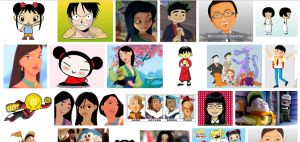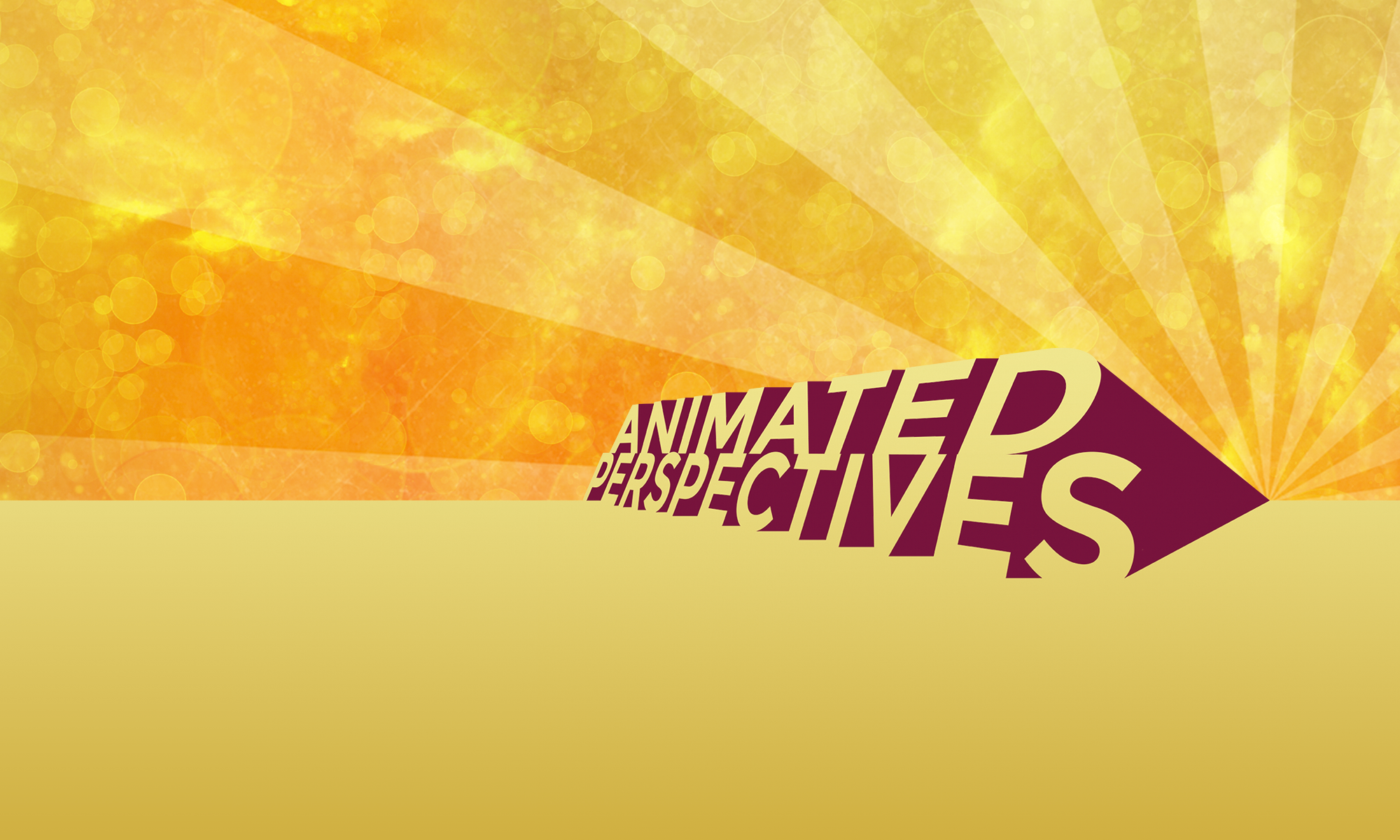
(That photo is what pops up when I google Asian Animated characters)
Growing up, I watched a lot of tv and cartoons. I consumed a lot of media and messages without really thinking about what I was watching because I was too young to know any better. I never really thought about Asian representation in media because there was never really enough of it growing up for it to cross my mind. That has definitely changed since coming to LMU where I began working for the office of Ethnic and Intercultural Services and started taking classes on diversity and interculturalism. Because of this, I started getting angry when I consumed media because I was aware and felt the need to question choices that filmmakers and show creators have been making for years.
When I think about positive Asian characters in animation, I think of Disney’s Mulan (such a classic), Avatar the Last Air Bender (yikes at M. Night Shyamalan!), and American Dragon Jake Long (Asian male lead with a love interest, wow!). All are fun examples of Asian representation, but they are few and far between. There is definitely a general lack of Asian representation and content in animated media that go beyond stereotypes or are three dimensional. Besides the general lack of Asian representation and content in animation, I have always wondered why we barely see Asian American representation. It seems as if the only story people want to tell are ones of magic/kungfu/warriors. Do people only care about Asian stories if they are mythical and magical?
Something I’ve always wanted to see is an animated sitcom centered around an Asian American family. I think a show that centers on the intersectionality of being Asian and being American is what younger me would’ve loved to see on tv. I can’t even imagine what that would look like! We have shows that are driven by characters and family dynamics like “The Simpsons” or “Bob’s Burgers” and I think creating a show around an Asian American family would be a good way to create more three dimensional characters. The shows I grew up watching were funny, but not really relatable because they never reflected what life was like in my home or my friend’s homes. People tend to create what they know and this industry is dominated by mostly white males which I think is one of the main problems (nothing bad to y’all white males). I am interested in working in entertainment and want to help be part of the change that will diversify the industry. The same stories are always being told about some white protagonist and their struggles that do not relate to me or other minority populations. Our world is so diverse yet we barely see shows that accurately represent the world around us.

If we continue to paint the same picture of Asian Americans in the media (nerdy/smart, quiet, etc.), then these stereotypes and prejudices will be affirmed again and again. I know things won’t change right away, but here’s to hoping that they do change!
Also, I know that there is a live action show centered around an Asian American family, yay to Fresh Off the Boat!


I agree we need more representation of Asians Americans in animation as well as the rest of the film and television industry. Fresh Off the Boat is a great example of a family simply “living life,” and it’s so refreshing to see that! You bring up an excellent point about the media only portraying the “mythical” and “martial arts” aspects of Asian culture. The one thing I noticed about this argument is that it narrows its focus to the American film studios. Perhaps it might be interesting to look at how other film industries in different countries portray Asians (i.e. Britain, Germany, China, Japan, Italy, France, Canada, etc.).
I think you bring up an interesting point about existing Asian characters and stereotyping. I hadn’t specifically thought about it, but you’re totally right that all existing characters totally pander to stereotypes. I wonder if maybe it’s something about the nature of animation that brings forth these overly stereotypical Asian characters? Regardless, you’re right and it’s so so so important to have distinguished animated characters of every race because this kind of racial profiling in animation exposes the world’s youth to a very inaccurate/ignorant way of viewing people.
When you mentioned Asian characters being mostly portrayed in mystical/magical stories, you brought up a good point. Like in Rogue One, the only (East) Asian main-ish character is Chirrut, the blind monk who is well-versed in the force. If Asian characters keep being cast into stereotypical roles, we’re not going to see them as fully-flushed out developed characters. I would love if we had an animated show that focused on an Asian American family with the humor of Bob’s Burgers or The Simpsons. Also, Avatar the Last Air Bender and American Dragon Jake Long are top notch. I think I might rewatch Jake Long since you reminded me of it!
I am glad you started off with your growing up experience with animated shows. I can really connect with that as well. It wasn’t until I came to LMU that I was able to see what was happening, and the lack of diversity within these animated shows. I wonder if that is the same with the creators as well. Maybe they are just blindly making these shows with white male leads because they don’t know any different. I like the point you made about that.
I really enjoyed reading your article!
I enjoyed your blog post and saw it as a good introduction/jumping off point to the greater conversation of Asian representation in animation. I appreciated how you discussed how important/comforting it is for children to see themselves reflected in the media they consume. I love the idea of an animated Asian American family, due to the lack of representation I never even thought of that as I show. I also like how you mentioned common Asian stereotypes like being “magical” or not having a love interest. I like your ideas and because of that almost wish your blogpost was longer deeply analyzing even more issues with representation 🙂
I love the idea of an Asian / Asian American family animated sitcom! I’m confident it will happen much sooner rather than later, especially with the rising prominence of digital media. If mainstream TV won’t allow it, at least internet outlets such as Netflix, Amazon Prime, or YoutubeRED exist. These outlets can hopefully disrupt the traditional development of a show and hopefully give way for unique work that respectfully represent Asians / Asian Americans.
I really appreciate this post because identifying as Asian myself, I have definitely noticed the general lack of Asian characters in not only animation but television and film too. For the one exercise in class where everyone had to present animated characters who looked like and reminded them of themselves, I was surprised at how challenging it was to find any for me. I resorted to the very limited options from my childhood: Gohan from Dragonball Z, Jake Long from American Dragon Jake Long, and Russell from Up. In fact, I may have been the one from the class with the fewest examples. Most notably, these cartoon heroes represent the progression of asian characters over the years. In Dragonball Z, Gohan started out as the young, weak crybaby, but he eventually reached his potential and became one of the strongest fighters and a fan favorite in the show. As for Jake Long and Russell, they were among the first asian protagonists of their respective stories. What concerns me though is the time it took for production studios to portray Asians as main characters. While Mulan, like you previously mentioned, has a female asian lead and precedes both American Dragon Jake Long and Up, the film is set in China, making the decision to have an all-Asian cast inevitable. Whereas, the latter two aren’t restricted by setting. Nevertheless, these works spanning the 1990’s to the late 2000’s show that Asian representation has taken a step in the right direction, but there is still a long road ahead. Certainly, I share your sentiment that it’s about time and we can only hope this trend continues.
Great job with the blog post! I agree it’s crazy that there are so few positive Asian characters in animation and movies. Luckily, I think this is changing for the better due to great shows like Avatar the Last Air Bender and Fresh Off the Boat. Overall, it’s still a big problem that won’t get fixed overnight, but at least Hollywood seems to be moving in the right direction.
I completely identified with what you said about representation in the Media.I grew up in Mexico City, but I grew up consuming American media. And in it, there isn’t really much portrayal of Mexican characters, and where there is, there isn’t much variety between the characters. I agree with you in and think that a cartoon revolving around an Asian American family would be a great idea. Most cartoons intended for teens that I can think are about white Americans and there really isn’t much diversity there. It would be both fun and interesting to have some.
Very well written. I think LMU does a good job with teaching diversity and different cultures. I took an Asian Martial Arts Movies class last semester and learned a lot about China and some of its different social and political problems. Hope you’re able to make a difference! Side note: I’ve always thought it was funny that there is barely any (good) Asian representation in animation considering that many American animators take inspiration from Japanese anime.
Bob’s Burgers in the context of your essay makes me think about something Tim Burton said in response to a question about his lack of diversity, and the answer he gave was really a sign of how we view minorities and caucasians. He essentially told the journalist that whites were conventional, normal, and the default – so why include the other races? They basically didn’t exist to him. The unfortunate thing about this besides the fact that it re emphasizes this notion about the privilege bubble is that it relieves you as the artist of all responsibility. The good thing, however, is that it allows for animators and filmmakers to use the racial stereotypes of whites, knowing that it doesn’t have a consequence because of their inherent privilege and superiority. So, to get to the point of your blog post, because of this kind of stereotyping that we see in film and specifically animation and in other media forms, and we have this extra sensitivity about stereotyping minority groups, it becomes extremely tricky to have an Asian version of a show like Bob’s Burgers, which exaggerates the physical proportions of typically white bodies. But I am happy that you wrote this piece and hopefully we will one day get to the point where we can make fun of all bodies without feeling like the implications of that are too large.